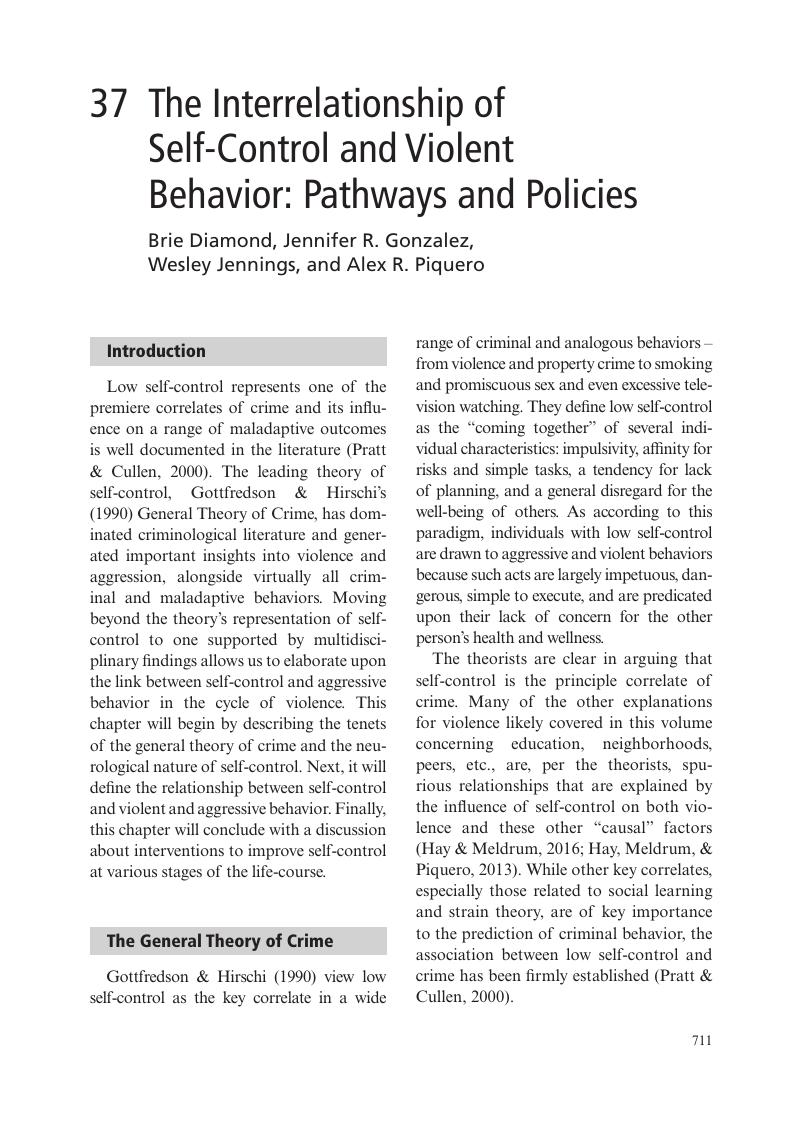Book contents
- The Cambridge Handbook of Violent Behavior and Aggression
- The Cambridge Handbook of Violent Behavior and Aggression
- Copyright page
- Dedication
- Contents
- Contributors
- Introduction: The Cambridge Handbook of Violent Behavior and Aggression
- Part I Introduction and Overview
- Part II Biosocial Foundations of Violence and Aggression
- Part III Individual and Interpersonal Factors for Violence and Aggression
- Part IV Contextual Factors for Violence and Aggression
- Part V Looking Toward the Future
- 37 The Interrelationship of Self-Control and Violent Behavior: Pathways and Policies
- 38 The New Frontier: Leveraging Innovative Technologies to Prevent Bullying
- 39 Neural Substrates of Youth and Adult Antisocial Behavior
- 40 Research Designs and Methods for Evaluating and Refining Interventions for Youth Violence Prevention
- 41 New Directions in Research on Violence: Bridging Science, Practice, and Policy
- Index
- References
37 - The Interrelationship of Self-Control and Violent Behavior: Pathways and Policies
from Part V - Looking Toward the Future
Published online by Cambridge University Press: 30 July 2018
- The Cambridge Handbook of Violent Behavior and Aggression
- The Cambridge Handbook of Violent Behavior and Aggression
- Copyright page
- Dedication
- Contents
- Contributors
- Introduction: The Cambridge Handbook of Violent Behavior and Aggression
- Part I Introduction and Overview
- Part II Biosocial Foundations of Violence and Aggression
- Part III Individual and Interpersonal Factors for Violence and Aggression
- Part IV Contextual Factors for Violence and Aggression
- Part V Looking Toward the Future
- 37 The Interrelationship of Self-Control and Violent Behavior: Pathways and Policies
- 38 The New Frontier: Leveraging Innovative Technologies to Prevent Bullying
- 39 Neural Substrates of Youth and Adult Antisocial Behavior
- 40 Research Designs and Methods for Evaluating and Refining Interventions for Youth Violence Prevention
- 41 New Directions in Research on Violence: Bridging Science, Practice, and Policy
- Index
- References
Summary

- Type
- Chapter
- Information
- The Cambridge Handbook of Violent Behavior and Aggression , pp. 711 - 723Publisher: Cambridge University PressPrint publication year: 2018
References
- 1
- Cited by



